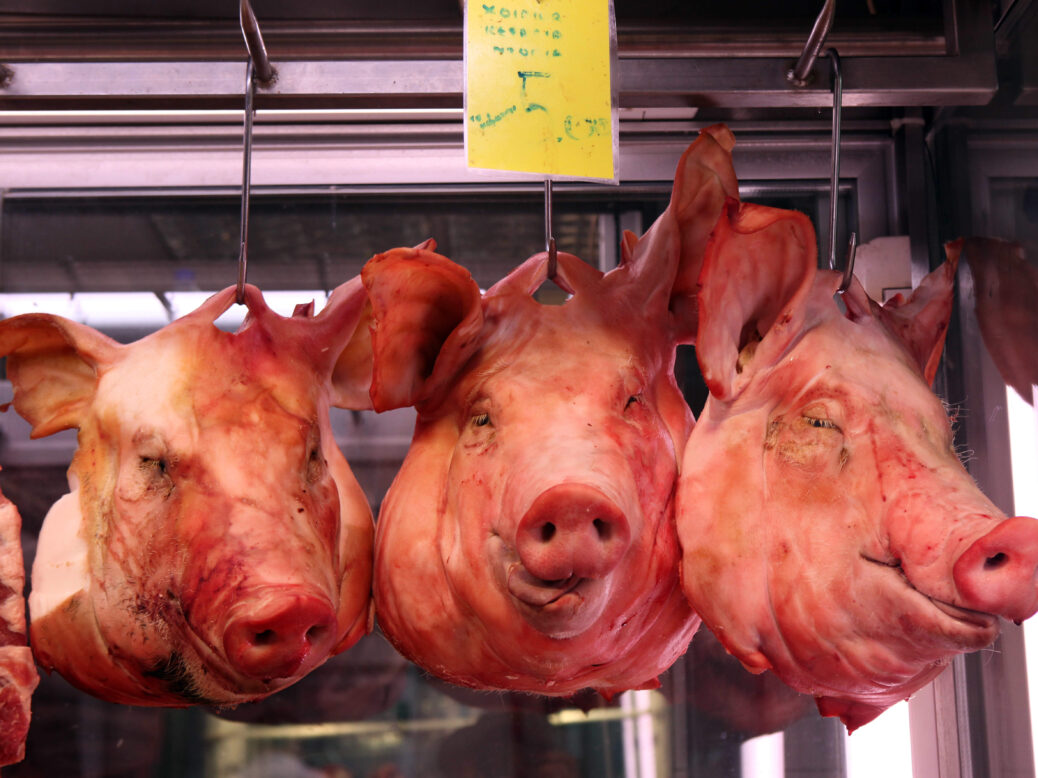
Is picking your nose and eating the dividend a form of cannibalism? How about sucking blood or chewing scabs? Do nail clippings count, or the occasional piece of dead skin? I only ask because there’s a strong case for arguing that eating yourself is the realest form of meal there can possibly be – after all, is not the body constantly consuming itself through apoptosis? Cannibalism, I concede, generally gets a bad press; although, that being noted, my first exposure to this universal but taboo mode of dining was through the Observer Magazine and I thought it sounded rather piquant.
Back in the 1970s the Observer serialised Piers Paul Read’s Alive, an account of a plane crash in the Andes. The Uruguayan national rugby team, their friends and family were on the plane – 45 people in all – and only 16 survived. When after a few days rescuers didn’t arrive, the survivors realised they would have to eat their dead companions if they, too, weren’t to perish. This they duly did, and as I recall, Read’s account of their cuisine was generally sympathetic: the rugger-buggers began at the buttocks, finding them the least “human” portion, and described the taste and texture (as has become commonplace in such stories) as being something like pork.
“Long pork” is apparently how certain anthropophagi describe their favourite food; I should have thought “pulled pork” would be more apt, as this is one dish that requires vigour to bring it to the cooking pot. There’s a lot of pulling in Robinson Crusoe, which some savants think is the first English novel. It may be that the emphasis placed on cannibalism is non-accidental: our noble castaway saves the indigene he dubs Friday from those who might eat him, but the civilisation he joins is predicated on slavery, a form of human consumption pulled on by an insatiable, imperialist sweet tooth. I’ve never eaten human flesh, apart from a few calluses nibbled in provincial station waiting rooms late at night when the buffet’s shut, but I’m not sure I object to it quite as strenuously as I probably should. In recent years there have been a number of cases of cannibalism in which the internet has played a conspicuous role: would-be anthropophagi advertise on the web for their dinner, and the dinner duly appears at their studio flat in Dortmund or Dorking and obligingly lays its head in the oven.
What the virtual dimension adds to the horror is beyond me – would it be any better if cannibals put cards up in newsagents’ windows, as presumably they were previously compelled to do? Somehow I doubt it. My hunch is we wouldn’t have all this people-eating if it weren’t for the rest of our loathsome foodie culture; once gourmets have sampled fugu fish, or live frogs, or locusts in honey, their jaded palate starts crying out for even more outrageous fare. Snacking on the hairy calf of someone you’ve entrapped online is only the next logical step. The way things are going there will be a dedicated website soon enough – I’d call it “Just Eat People!” assuming the domain name hasn’t been snaffled up already.
The Monty Python team was ahead of the game back in the Alive decade. There was a ditty in the book they published that went: “Much to his mum and dad’s dismay/Horace ate himself one day . . .” and then anatomised this consumption of anatomy, until the predictable ending: “And there he lay: a boy no more,/Just a stomach on the floor . . .” I don’t want to stuff this stanza with too much by way of semantics, but it does occur to me that if we keep on the way we are going with our colossal greed, all that will be left of human civilisation is a planetary stomach on the floor of the cosmos.
The closest I’ve got, in experiential terms, to eating someone was when my friend Michael and I ordered the pig’s head at St John, the restaurant helmed by Fergus Henderson that advertises itself as the home of “nose-to-tail eating”. Michael was brought up in a kosher household so you might have thought he’d forswear shortish swine on that basis alone. As for me, I had no principled objection to eating something with a face, but I’d never considered chowing down on the face itself. The pig’s head arrived and it had the glistening, lifelike appearance and crisped eyes you associate with government ministers being interviewed on the television news.
Rather like the poor rugby players marooned in the Andes, we began with the cheeks, reasoning that these were the least pig-like feature; but the meat was so beautifully cooked that soon enough we were hacking away at the head with gusto. The Rubicon was crossed when I found myself chewing on a corner of the snout that included a nostril. Eating really doesn’t get much more corporeal than that.
Among traditional peoples there are all sorts of beliefs about what happens when you ingest human meat: you possess the strength of the opponent you have just vanquished in battle (or, more troublingly, his weakness). Well, ever since I ate the pig of restricted height I’ve been more of a swine than ever – for real.
Next week: Madness of Crowds



